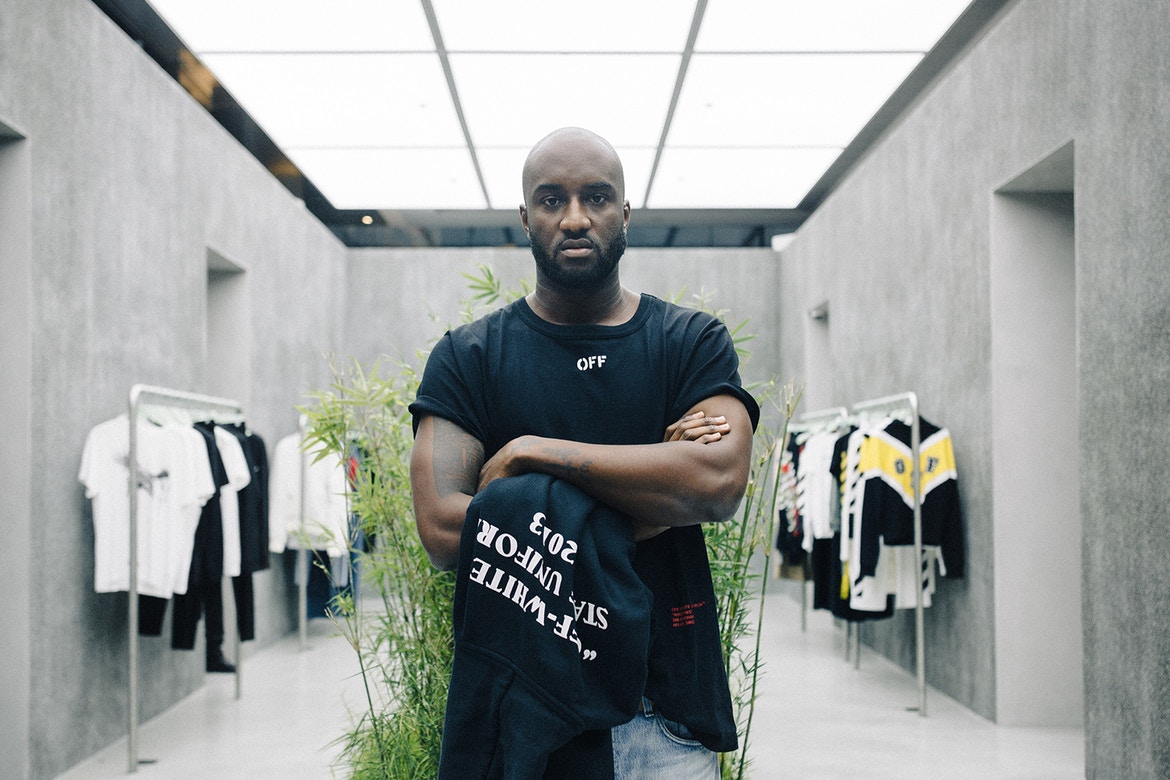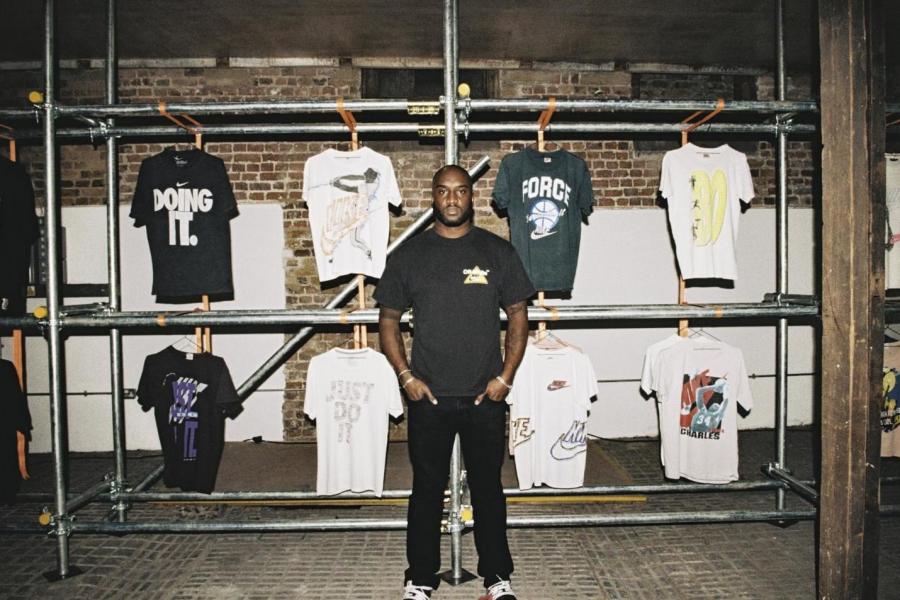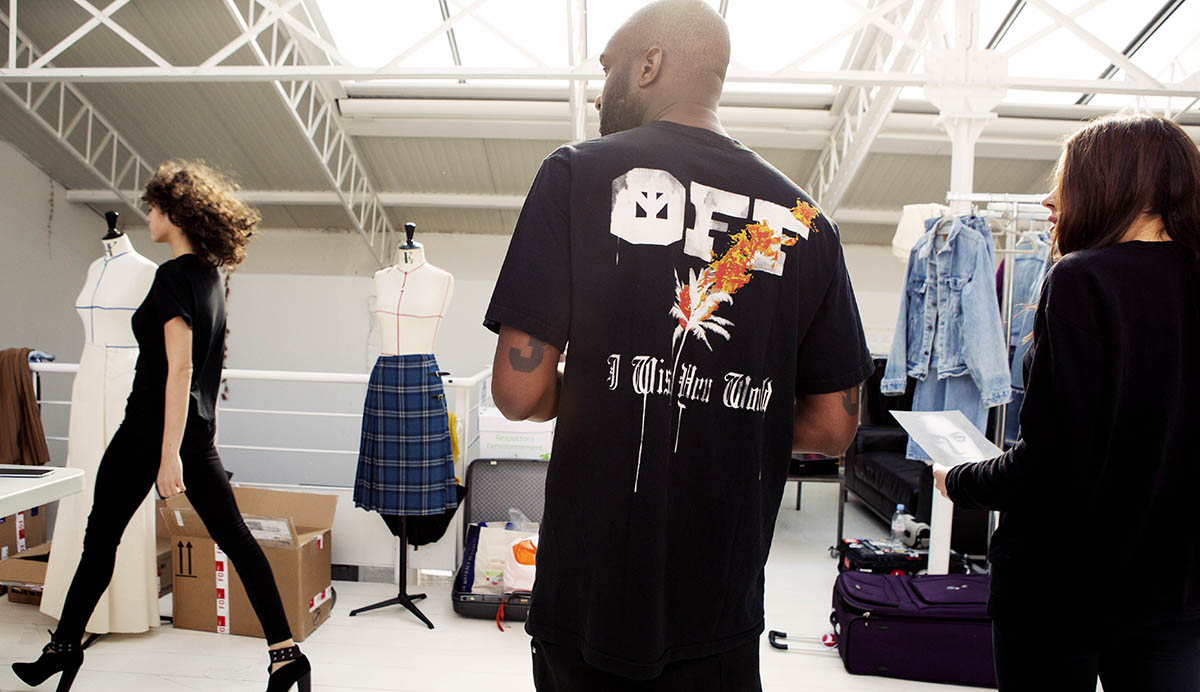American designer, DJ and stylist, Virgil Abloh – creative director of Off-White has made waves in the fashion world. Here’s a look at his lead up to creating one of the biggest luxury streetwear labels.

“I never made the conscious decision to be a designer. I just had an exorbitant amount of ideas; fashion design is a place for people like that because there are a lot of decisions to make.”
He grew up middle-class in Rockford, Illinois, the son of Ghanaian immigrants who let him DJ on the weekends but also made sure he went to college at the University of Wisconsin. Virgil worked towards a civil engineering degree before heading to graduate school at the Illinois Institute of Technology, where he studied architecture – “I wanted to build skyscrapers because I figured if you could build the tallest building, you could design a spoon, you know?” Virgil was young and already street certified in Chicago at the same time Kanye was becoming Kanye. The day they started working together in 2003 was the day of Virgil’s graduation. He skipped most of his own final critique to take a meeting with Kanye’s then manager, John Monopoly. He offered his own good taste and a willingness to design merchandise; Kanye, who is perpetually drawn to people who know what he doesn’t, and who’d already met Virgil a few times around Chicago, put him on the payroll. Like the people who wear Off-White now, both Virgil and Kanye aspired to a cool they hadn’t quite attained yet. “There’s no line between a designer and consumer,” Virgil says today, “I’m also a consumer.”
After working for an architecture firm for two years, Abloh shifted his focus to fashion. In 2009, he founded RSVP Gallery, an art gallery and menswear boutique in Chicago. The same year, he joined Kanye West’s creative agency Donda as creative director, overseeing projects like stage shows and concert merchandise.
In 2012, Abloh, then creative director for Kanye, launched his first fashion brand – Pyrex Vision – which screen-printed logos onto Champion t-shirts and deadstock Ralph Lauren rugby shirts. Alongside this, he also collaborated with Matthew Williams and Heron Preston as part of a collective called Been Trill. Despite the inflated price tags (with flannels selling in excess of $500) it sold out, and hence created a platform and an audience for Abloh’s next step.
Pyrex went down in 2013. That same year, Abloh launched luxury men’s and women’s streetwear label Off-White. The Milan-based brand was picked up by stockists like Barneys and Colette, and is worn by the likes of Jay-Z, A$AP Rocky, Rihanna and Beyoncé. In 2015, Off-White was an LVMH Prize finalist.

For all his passion and craft – one in which he is honing with each seasonal offering – Abloh is not without his detractors. His relationship with West, with whom he worked for twelve years, is usually at the core of this. And it is perhaps true that Pyrex Vision would not have caught the attention of the fashion press were it not for his association with the musician. It’s a criticism that doesn’t seem to bother Abloh though, who remains close to West. “He’s the greatest cultural figure of our lifetime…” he says. “I have spent twelve years, 365 days a year, travelling next to this nuclear energy who is changing the concept of youth culture in an active role. The only thing I’m averse to is the idea of the entourage,” he continues. “My work speaks for itself, and his work speaks for itself. The work that we do together speaks for itself.”
Virgil has taken full advantage of a strange and disorienting time in fashion – a moment when interest in men’s clothing has never been higher, while the bar for entry in terms of making and designing it has never been lower. “Right now, the whole gatekeeper system is so screwed up,” Virgil says. All the billionaires in beautiful suits who traditionally kept out people like Virgil and Virgil’s customers, “they lost their footing. It’s raining. Kids can push them over. I know kids who are half my age who can kill a brand on a whim, and make it uncool if they want to.”
Within Off-White’s rise is the whole story of an industry that for a long time was defined by how impossible it was for most of us to access. Even as recently as 10 or 15 years ago, the streetwear that Virgil worshipped and wore – Supreme, Alife, a million limited-run t-shirts and five-panel hats – was a downtown New York thing, a Japan thing, an L.A. thing. Not a global-fashion thing. But the fashion industry is as good at co-opting dissent and competition as any other capitalist enterprise.

Streetwear kids, born of oppositional 90’s culture, found themselves in the mid-2000’s, when the internet crushed, or at least flattened out, every creative economy known to man. The system they defined themselves against sank and collapsed; in the rush to the lifeboats, the concept of “selling out” lost all coherence, meaning or relevance. Plus, regular people could now educate themselves about rich-person stuff that used to be hidden from them. Another thing Virgil likes to talk about is the “Tumblr generation” – teenagers who grew up with access to previously rarefied knowledge about fashion, who could peruse every collection ever done by Raf Simons or Hedi Slimane and then follow the trail of inspiration from there. They couldn’t afford it, but they understood it. They had taste before they had money. Now, nearly a decade on, a lot of them have money, too.
Indeed, the influence of Raf Simons – who like Abloh, studied a different type of design discipline before entering into fashion – can also be seen throughout his work, both visually and conceptually. The long flowing coats and oversized polo shirt zippers, as well as the Nebraska elements which appeared both this season and last, felt distinct, if not direct – his work tends to present existing ideas in new contexts. “To me the greatest designer of our time is Raf,” he says. “Raf put the top layer to streetwear. And I don’t mean streetwear as in like a graphic t-shirt with a logo on it, I mean like the concept of youth-driven, forward-thinking silhouettes… So that’s the genre of fashion that I’m in – that’s the one I’m interested in and of course, he’s the leader of that, and it’s in the DNA of how I think – so I look at myself as like a student of the genre that I believe is the best, the most relevant of the time.”
Join us next week for the second instalment in this profile, ‘Virgil Abloh: For The People’.






